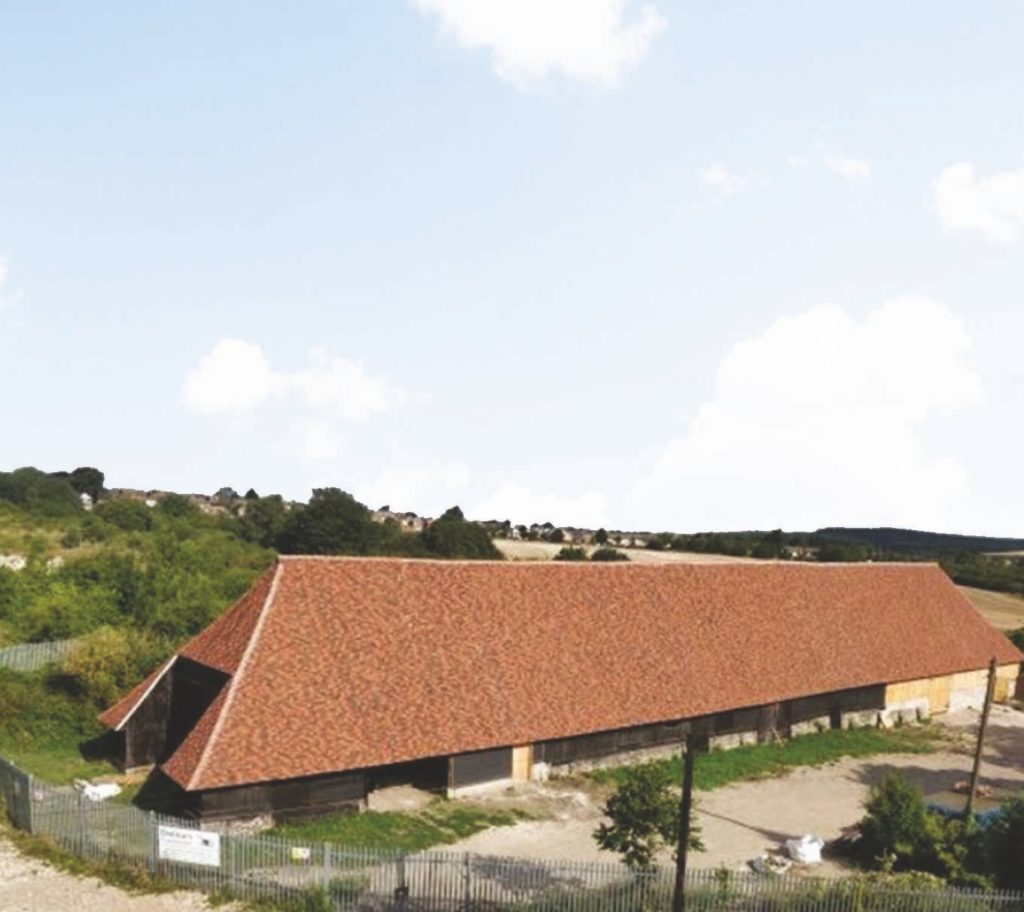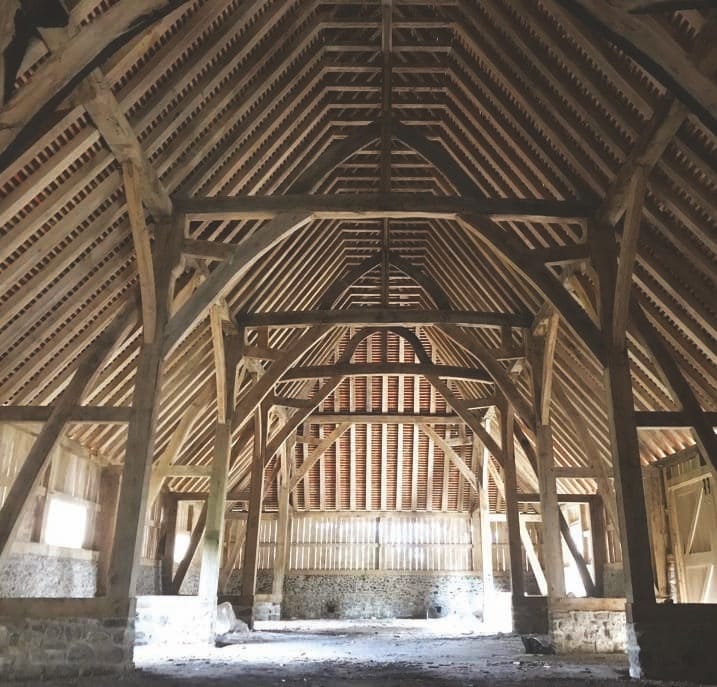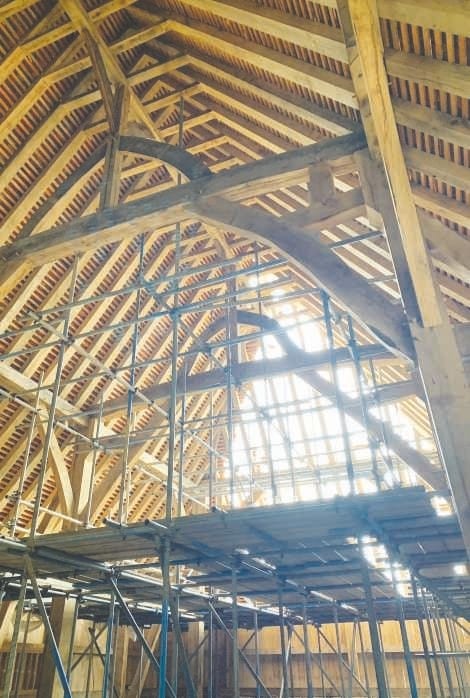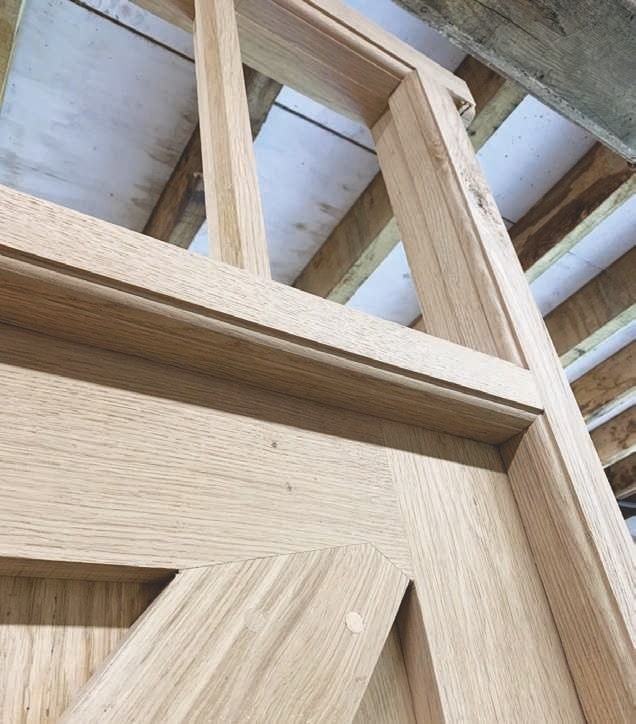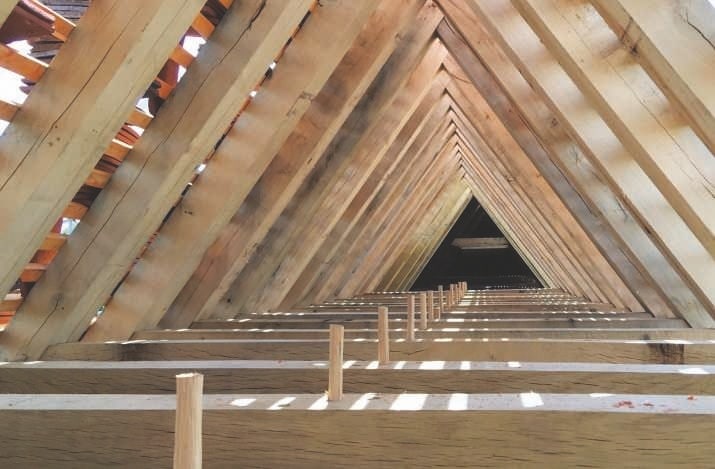To The Manor Barn…
Louise Tomlin visits Manor Barn near Rochester to see how the ongoing works to reconstruct what is considered the longest medieval building in Britain are progressing.
It is difficult not to be awed by the sheer enormity of this stunning structure, as it towers over you and when you enter the cavernous space you get a real feeling of walking through history, even filled with scaffolding and supports as it was when I visited due to it being partway through the extensive repair work.
Dendrochronology of the timbers – tree ring dating – confirms that it was built in the early 1400s for the St. Andrew’s Benedictine Priory, so it has witnessed many centuries of events – good and bad, the Reformation of the monasteries for one, when it was confiscated from the Church by King Henry VIII, so it’s not surprising there’s a strong sense of the past inside this wonderful old barn.
It’s considered to be the longest timber medieval structure in Britain, at approximately 65 meters in length and is possibly the finest example of a medieval Kentish barn, with its oak framed construction, main arcade and two aisles running either side of the nave. Its purpose was to store tithes, which were a form of taxation where a tenth of the grain produced by local farmers was given to the church to help support the clergy.
The Barn has stood strong throughout many years and continued to be used for storing grain and vegetables, housing animals and many other agricultural purposes for over six centuries. Sadly, in later years, it has suffered from neglect, and an almost catastrophic arson attack in the early 2000s devastated a third of the building and resulted in the loss of four of the fourteen bays within.
Happily this more recent chapter of abandonment and disrepair in Manor Barn’s history is now in the past, with works to rebuild and conserve it being well underway. Dolmen, Historic Building Conservation Specialists who have a great track record for their work on the prestigious ‘Canterbury Cathedral Journey’ which is a 4-year repair project that started in 2017 and Westminster Hall, amongst other high profile conservation projects, has been appointed principal contractor by the co-owners Walter Roberts and Richard Smith.
Dolmen has recently completed six months of work that has encapsulated sensitive repairs to the remaining two-thirds of the old barn, ensuring the structure is sound throughout, and they have also rebuilt the section that burnt down, which restores the barn to its original length, with new timber frames in green oak to match the originals to support rebuilt stone and flint walls.
To ensure the reconstruction was as authentic as possible no modern materials were used. The existing walls in the old part of the building were repaired with flint and lime mortar. In the new section of the barn, local stone was used with limecrete foundations.
The oak boarding or cladding of the barn has been repaired or replaced, with all joinery to match what was there originally using templates from the old building, including traditional mullion windows and replacement doors and gates. These were constructed off-site in workshops at Dolmen HQ, then finished and fitted on-site. Added to that extensive list of timber works, curved braces were sourced locally and sawn by hand off-site, then also brought in fitted and finished on-site.
To top it all off the imposing roof has been stripped of its tiles, all trusses have been repaired in the old section, or replaced in the new third of the barn. All of the tiles that could be reused have been, that was 70%, with 30% new Tudor Kent peg tiles mixed into an agreed pattern advised by Historic England. That’s a staggering 95 thousand used to re-tile the whole roof.
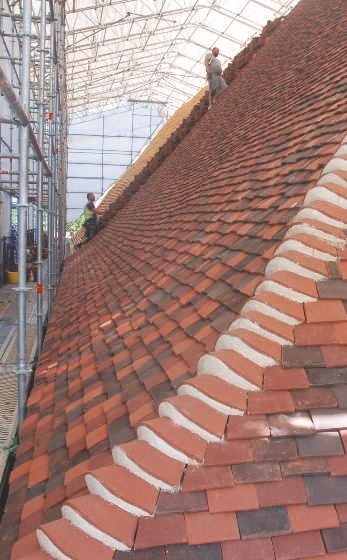
“We are all excited to be involved in working on the conservation of such a beautiful medieval building.” Jack Massey, Director of Projects for Dolmen said. “Our team of specialist carpenters and highly skilled craftsman have been inspired to use their expertise and considerable technical skills to conserve a building that is of huge historic significance. We are all looking forward to seeing the completion of the plan to return this stunning barn to something that will once again be a useful building and a valuable resource for the local community, and what’s more, it can be enjoyed by future generations as an important part of our country’s heritage.”
You can see more about Dolmen Conservation on their website dolmen-conservation.co.uk and follow their recent projects of historic conservation building repairs on Instagram at dolmenconservation.
Posted in: Property
